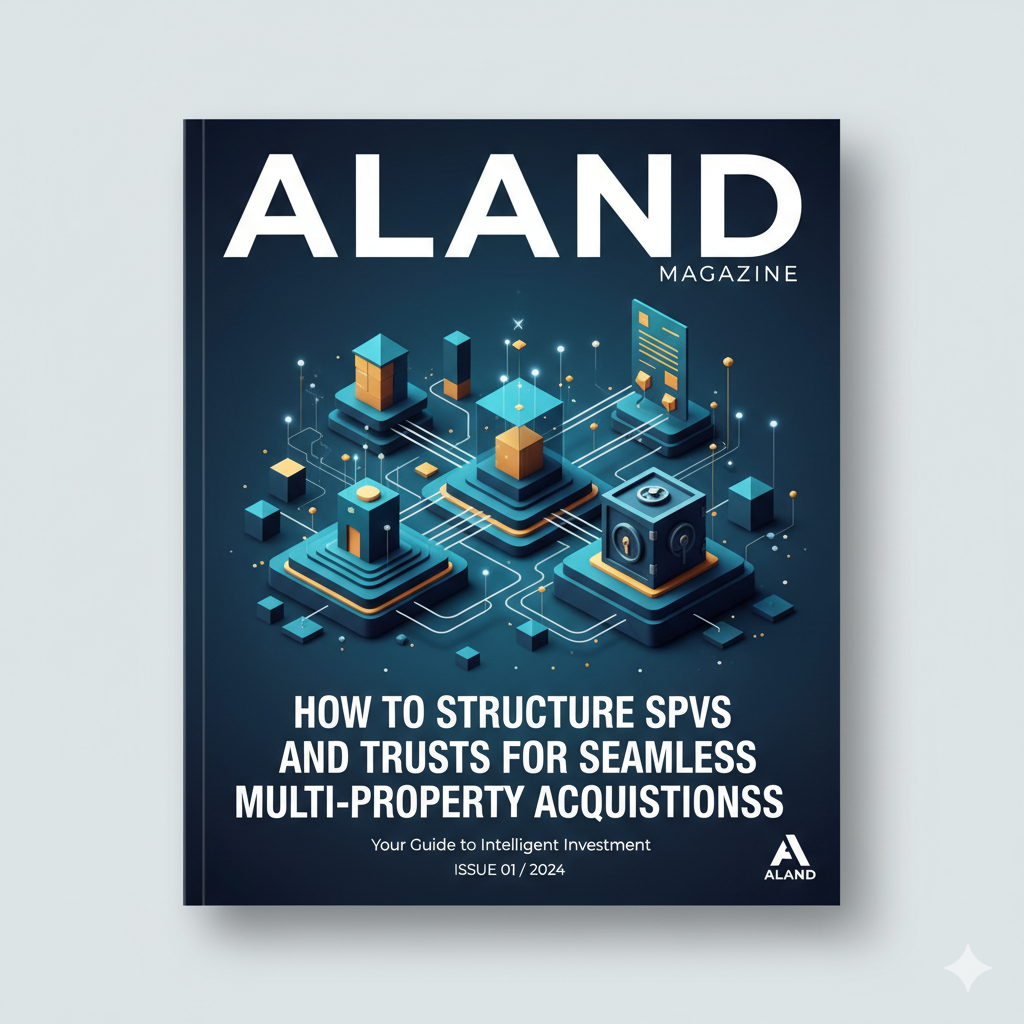How to Structure SPVs and Trusts for Seamless Multi-Property Acquisitions
- Published Date: 26th Oct, 2025
-
4.9★ ★ ★ ★ ★(127)

The Strategic Role of SPVs in Multi-Property Acquisitions
SPVs are standalone entities created to isolate financial risk and streamline transactions. In multi-property acquisitions, an SPV can hold multiple assets under one legal structure, simplifying ownership and financing. By segregating assets and liabilities, SPVs protect the parent company or investor from risks tied to a single property’s performance. For instance, if one property faces legal or financial issues, the SPV structure ensures other assets remain unaffected.
Dr. Ghamari emphasizes that SPVs are particularly valuable in international real estate markets, where cross-border regulations and tax regimes vary. An SPV domiciled in a favorable jurisdiction, such as Switzerland or Singapore, can optimize tax obligations and enhance investor confidence. According to insights from ALand’s Blog, SPVs reduce administrative burdens by centralizing due diligence, title transfers, and financing arrangements, enabling faster deal execution.
Practical Takeaway: When structuring an SPV, prioritize jurisdictions with robust legal frameworks and tax incentives. Engage local legal and tax advisors to align the SPV’s purpose with the acquisition’s goals, ensuring compliance with local regulations.
Trusts as a Complementary Tool for Asset Protection
Trusts complement SPVs by offering asset protection and estate planning benefits. A trust holds property titles on behalf of beneficiaries, shielding assets from creditors or legal disputes. In multi-property acquisitions, trusts can manage diverse portfolios while ensuring seamless succession planning for high-net-worth individuals. Dr. Ghamari, with his expertise in global investments, highlights trusts as a tool for mitigating risks in volatile markets, particularly in regions with unstable political or economic climates.
For example, a discretionary trust can hold properties acquired through an SPV, allowing the trustee to distribute profits or assets based on predefined criteria. This structure is ideal for family offices or investors seeking long-term wealth preservation. The ALand Platform offers digital tools to streamline trust administration, integrating blockchain-based solutions for transparent asset tracking and reporting.
Practical Takeaway: Use trusts to layer additional protection over SPV-held assets. Define clear beneficiary terms and leverage digital platforms like ALand for real-time portfolio management and compliance monitoring.
Economic and Market-Based Advantages
Structuring SPVs and trusts aligns with broader economic trends favoring efficiency and risk management. According to The ALand Times, global real estate markets are increasingly driven by institutional investors who rely on SPVs to pool capital for large-scale acquisitions. This trend reflects a shift toward collaborative investment models, where SPVs facilitate co-investment from diverse stakeholders, such as pension funds or private equity firms.
Dr. Ghamari notes that trusts and SPVs also enhance investor appeal by signaling professionalism and strategic foresight. In markets like Dubai or London, where foreign investment is heavily scrutinized, a well-structured SPV demonstrates compliance and financial discipline, attracting partners and lenders. Additionally, tokenization—a concept Dr. Ghamari champions through EE Gold—is reshaping real estate investment. By tokenizing property assets within an SPV, investors can fractionalize ownership, increasing liquidity and broadening access to high-value markets.
Practical Takeaway: Explore tokenization within SPVs to unlock liquidity for multi-property portfolios. Use platforms like EE Gold to integrate cryptocurrency-based transactions, reducing reliance on traditional banking systems.
Measurable Outcomes of SPV and Trust Structures
The benefits of SPVs and trusts are quantifiable. A well-executed SPV can reduce transaction costs by up to 15%, as centralized management minimizes legal and administrative fees . Trusts, meanwhile, can lower estate tax liabilities by 20-30% in certain jurisdictions, preserving wealth for future generations. Investors also report a 10-15% increase in deal closure rates when using SPVs, as lenders view these structures as low-risk due to their bankruptcy-remote nature.
Market sentiment further underscores these benefits. A 2024 survey cited in The ALand Times found that 68% of institutional investors prefer SPV-structured deals for their clarity and risk isolation. Trusts, meanwhile, boost investor confidence by ensuring assets are protected from unforeseen liabilities, enhancing portfolio stability.
Practical Takeaway: Track ROI metrics like cost savings and deal closure rates when using SPVs and trusts. Use ALand’s analytics tools to monitor portfolio performance and adjust strategies based on market feedback.
For deeper insights into structuring SPVs and trusts, explore ALand’s Blog, leverage the ALand Platform for digital solutions, or discover innovative investment avenues through EE Gold. Stay informed with market trends via The ALand Times to drive your next multi-property acquisition.

